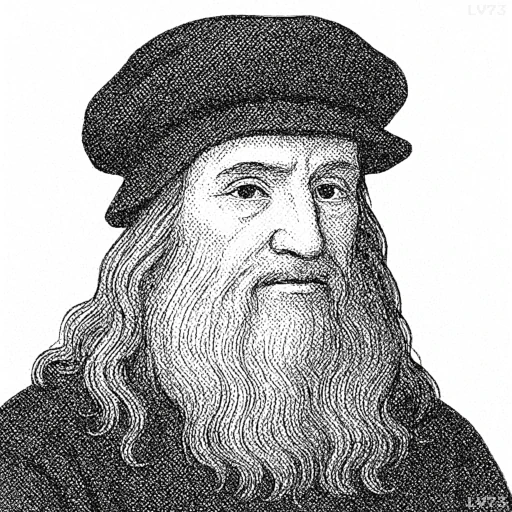“Painting is concerned with all the 10 attributes of sight; which are: Darkness, Light, Solidity and Colour, Form and Position, Distance and Propinquity, Motion and Rest.”

- April 15, 1452 – May 2, 1519
- Italian
- A versatile man (painter, sculptor, architect, inventor, scientist, etc.)
table of contents
Quote
“Painting is concerned with all the 10 attributes of sight; which are: Darkness, Light, Solidity and Colour, Form and Position, Distance and Propinquity, Motion and Rest.”
Explanation
In this quote, Leonardo da Vinci lays out the essential elements of visual perception that a painter must master to create a realistic and dynamic work of art. These ten attributes—darkness, light, solidity, colour, form, position, distance, propinquity (nearness), motion, and rest—represent the fundamental components of how we see and interpret the world. Mastering these allows an artist to depict reality in a way that resonates with the viewer’s own experience of sight.
Historically, during the Renaissance, artists like Leonardo da Vinci and Michelangelo sought to perfect their understanding of human perception, anatomy, and perspective. They realized that light and shadow could create the illusion of depth and form, while colour and contrast could convey mood or texture. The concept of distance and propinquity refers to how things appear larger or smaller depending on their proximity to the viewer, and motion and rest are key in capturing both the fluidity of life and moments of stillness in their paintings.
In modern terms, these principles of sight are still relevant, not just in painting, but in all visual media. For example, in photography, cinematography, and even digital design, understanding how light, colour, and form interact is crucial for creating compositions that guide the viewer’s eye and evoke emotion. Today, whether an artist is working with traditional paint or digital tools, these same attributes continue to form the foundation of their craft, helping them communicate depth, movement, and emotion in their work. Da Vinci’s observations remind us of the complexity and beauty of vision, and how art can capture the intricate layers of what we see.
Would you like to share your impressions or related stories about this quote in the comments section?

